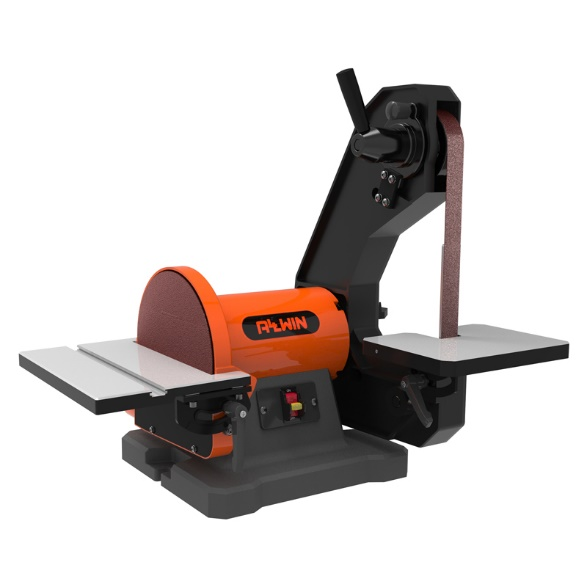A båndsliber til bordmonteringer normalt fastgjort til en bænk til finformning og finish. Båndet kan løbe vandret, og det kan også vippes i enhver vinkel op til 90 grader på mange modeller. Udover at slibning af plane overflader er de ofte meget nyttige til formning.
Mange modeller har også enskivesliberpå siden af maskinen. Denne leveres med et slibebord, der ofte kan vippes op til 45 grader, og en geringsføring. Kombinationen af disse to funktioner gør det muligt at indstille sammensatte vinkler, hvilket øger anvendelsesområdet for båndsliberen.
Mestbåndslibere til bordmonteringhar også en slibeskive og et slibebord. Disse øger alsidighed og muliggør præcis slibning af små stykker.
BåndsliberSikkerhedstips
Brug aldrig løstsiddende tøj, nårbåndslibning, da det kan sætte sig fast i bæltet eller rullerne. Slips, halskæder og armbånd skal lægges inden i tøjet eller fjernes.
Træstøv kan forårsage luftvejsproblemer og allergiske reaktioner. Brug altid støvmaske og sikkerhedsbriller.
Allebåndsliberehar støvporte. Tømstøvposeregelmæssigt eller vedhæft en eller anden form forstøvudsugningtil bordmodeller.
Hold hænder og fingre så langt væk fraslibebåndsom muligt under arbejdet. Hudafskrabninger forårsaget af slibemaskiner er meget smertefulde.
Sluk altid for strømmen eller fjern batteriet fra en trådløsbåndsliberfør du skifter remmen.
Opslagstidspunkt: 19. juli 2023



